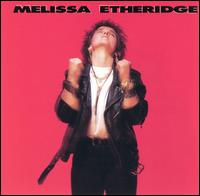거품탈모
Foam depopulation
폼 디포밍(Foam Depopulation) 또는 발포(Foaming)는 넓은 면적에 폼을 분사하여 호흡을 방해하고 궁극적으로 질식을 유발함으로써 농장 동물을 대량 살처분하는 수단입니다.[1] 일반적으로 질병 확산을 막기 위해 사용됩니다.[2] 코로나19 팬데믹 기간 동안 도축이 밀린 후 농장 동물을 죽이는 데에도 거품이 사용되었습니다.[3] 거품 제거는 가금류와 돼지에 사용되었으며 소에 사용하기 위한 초기 연구를 보았습니다.[4] 일부 단체의 비판에 직면했습니다. 일부 수의사들은 질식으로 인한 고통이나 길 잃은 생존자들이 겪은 해악을 이유로 드는 많은 동물 권리 및 동물 복지 단체와 함께 [5]비인간적이라고 불렀습니다.[6][7]
역사
폼 디포밍은 2004년 H5N1 발병에 대응하여 2006년에 개발되었습니다.[8] 같은 해 미국 USDA-APHIS에서 조건부 승인을 받았습니다.[9]
2015년 미국에서 발생한 H5N2의 경우 66%의 지역에서 사용된 가금류를 대량 살처분하는 데 발포가 주요 방법이었습니다.[10] 그러나 2019년 이후 미국에서는 건물에 공기를 차단한 후 질식 및 열사병에 의존하는 논란의 여지가 있는 환기 차단으로 발포가 점점 더 대체되고 있습니다.[11]
2020년, COVID-19 대유행으로 공급망 붕괴와 육류 포장 폐쇄가 발생했습니다. 이로 인해 도축 작업이 지연되어 일반적인 도축 과정에서 벗어나 많은 장소에서 발포 또는 환기 차단을 사용하여 농장 동물을 대량 살처분했습니다.[3]
비평
거품 제거는 ASPCA,[12] 동물 정의 [13]및 동물을 위한 자비와 [14]같은 조직에서 비인간적이라고 불렸습니다. 일부 수의사들도 이 방법의 윤리성에 의문을 제기했습니다.[5] 우려 사항으로는 질식 중에 느끼는 고통과 주변에서 사망한 사람들을 보는 길 잃은 생존자들에 대한 스트레스 또는 기타 영향이 있습니다.[6][7]
생물다양성센터와 같은 다른 단체들은 농장의 PFAS가 거품 제거를 위해 소방용 거품을 사용하는 것에 대해 문제를 제기했습니다.[15]
또한 일부 연구자들은 수성 폼의 자원 사용에 대한 환경적 우려를 제기했습니다. 양은 다양하지만 거품을 내기 위해 30,000리터의 물을 사용하는 것이 일반적입니다. 일반적으로 물은 거품의 대부분이며 거품 농축액은 1%를 차지합니다.[16]
글로벌사용량
미국에서 처음 개발되었지만 발포제는 다른 곳에서 사용되었습니다.[17] 예를 들어, 이스라엘과[18] 호주에서는 사용이 일반적입니다.[19][20]
일부 국가의 관리 기관은 거품 제거에 더 직접적인 지원을 제공했습니다. 예를 들어, 일본 농림수산성은 발포가 가능한 장비를 구입했습니다.[21] 미국 국립 수의학 비축량도 거품 제거 단위를 유지합니다.[22]
참고 항목
참고문헌
- ^ "New weapon in war on bird flu: tiny bubbles". NBC News. 2007-06-10. Retrieved 2024-01-21.
- ^ Bolotnikova, Marina (2022-03-08). "'They're cooking them alive': calls to ban 'cruel' killing methods on US farms". The Guardian. ISSN 0261-3077. Retrieved 2024-01-21.
- ^ a b Kevany, Sophie (2020-04-29). "Millions of farm animals culled as US food supply chain chokes up". The Guardian. ISSN 0261-3077. Retrieved 2024-01-20.
- ^ Capria, Vittoria M; Arruda, Andréia G; Cheng, Ting-Yu; Campler, Magnus R; Youngblood, Brad L; Moeller, Steven J; Bowman, Andrew S; Kieffer, Justin D (2023-01-01). "Water-based medium-expansion foam depopulation of adult cattle". Translational Animal Science. 7 (1): txad065. doi:10.1093/tas/txad065. ISSN 2573-2102. PMC 10321402. PMID 37415594.
- ^ a b Donn, Jeff (2007-08-26). "Industry looking for 'humane' way to slay thousands". Los Angeles Times. Retrieved 2024-01-21.
- ^ a b Bolotnikova, Marina (2023-11-17). "Bird flu is surging again on poultry farms. The US is normalizing the cruelest mass killing method to stop it". Vox. Retrieved 2024-01-20.
- ^ a b "Bird flu's grisly question: how to kill millions of poultry". AP News. 2022-04-07. Retrieved 2024-01-31.
- ^ Gurung, Shailesh; Hoffman, John; Stringfellow, Kendre; Abi-Ghanem, Daad; Zhao, Dan; Caldwell, David; Lee, Jason; Styles, Darrel; Berghman, Luc; Byrd, James; Farnell, Yuhua; Archer, Gregory; Farnell, Morgan (2018-01-11). "Depopulation of Caged Layer Hens with a Compressed Air Foam System". Animals. 8 (1): 11. doi:10.3390/ani8010011. ISSN 2076-2615. PMC 5789306. PMID 29324639.
- ^ Benson, E.R.; Alphin, R.L.; Dawson, M.D.; Malone, G.W. (May 2009). "Use of water-based foam to depopulate ducks and other species". Poultry Science. 88 (5): 904–910. doi:10.3382/ps.2008-00268. PMID 19359675.
- ^ Final Report for the 2014–2015 Outbreak of Highly Pathogenic Avian Influenza (HPAI) in the United States (PDF) (Report). August 11, 2016.
- ^ Reyes-Illg, Gwendolen; Martin, Jessica E.; Mani, Indu; Reynolds, James; Kipperman, Barry (2022-12-29). "The Rise of Heatstroke as a Method of Depopulating Pigs and Poultry: Implications for the US Veterinary Profession". Animals. 13 (1): 140. doi:10.3390/ani13010140. ISSN 2076-2615. PMC 9817707. PMID 36611748.
- ^ "Our Fight Against Inhumane "Depopulation" Methods ASPCA". www.aspca.org. August 6, 2020. Retrieved 2024-02-10.
- ^ Labchuk, Camille (2022-07-05). ""Live Birds Buried Under Dead Ones": Whistleblower Speaks Out About Avian Flu Cull". Animal Justice. Retrieved 2024-02-10.
- ^ Bugga, Hannah (2020-08-05). "Mercy For Animals Urges Congress Not to Fund Cruel Mass Killing". Mercy For Animals. Retrieved 2024-02-10.
- ^ Kevany, Sophie (2020-06-30). "Ban burning and burying of animals in US Covid-19 farm culls, NGOs urge". The Guardian. ISSN 0261-3077. Retrieved 2024-02-14.
- ^ Benson, E. R.; Alphin, R. L.; Rankin, M. K.; Caputo, M. P.; Hougentogler, D. P.; Johnson, A. L. (Dec 2012). "Mass Emergency Water-Based Foam Depopulation of Poultry". Avian Diseases. 56 (4s1): 891–896. doi:10.1637/10160-040912-Reg.1. ISSN 0005-2086. PMID 23402109. S2CID 22903879.
- ^ "Mas Depop & Euthanasia – Avian Euthanasia" (PDF). Foreign Animal Disease Preparedness & Response Plan (FAD PReP)/National Animal Health Emergency Management System (NAHEMS). 2015.
- ^ Avidov, R.; Sudharsan Varma, V.; Saadi, I.; Hanan, A.; Yoselevich, I.; Lublin, A.; Chen, Y.; Laor, Y. (Jan 2021). "Physical and chemical indicators of transformations of poultry carcass parts and broiler litter during short term thermophilic composting". Waste Management. 119: 202–214. Bibcode:2021WaMan.119..202A. doi:10.1016/j.wasman.2020.09.040. ISSN 0956-053X. PMID 33070090. S2CID 224784653.
- ^ Angus, Crossan (November 2014). Development and Extension of Industry Best Practice for On-Farm Euthanasia of Spent Layer Hens (PDF) (Report). ISBN 978-1-921010-53-8.
- ^ Operational manual: Destruction of animals (PDF) (Report). Animal Health Australia. 2015. ISBN 978-1-876-71438-3.
- ^ John, Weaver (October 2016). PVS Evaluation Report (PDF) (Report). World Organisation for Animal Health.
- ^ 2024 USDA EXPLANATORY NOTES – ANIMAL AND PLANT HEALTH INSPECTION SERVICE (PDF) (Report). 2024.


